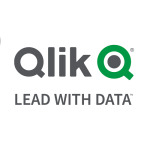What is our primary use case?
We are Microsoft resellers.
We use it for clients to extract and analyze data from ERP systems. Then, we basically put it in on-premise Power BI, and once we have the reports and visuals that we want, we publish it to different members of whoever has access to see the reports. Basically, we publish it to their Power BI in the Cloud.
How has it helped my organization?
For one client, it gives all sales reps across all geographic regions access to sales data, so they know who's purchasing what product in what part of the country, and that sort of thing. It shows them overtime when sales are high and low, as well as what types of customers are buying. We occasionally connect it to external data. We link it to some demographic data, such as population figures in different provinces in Canada, to see how sales are doing.
It is beneficial. It's one of the applications we use for a client's sales reps all over the country to get all kinds of sales data. It also benefits them. They can ask, "Why isn't this customer purchasing this specific product?" So they know which customers are genuine or who are purchasing and may try to push a different line with them. It provides a wealth of useful information to the salespeople.
What is most valuable?
It gives us, the ability to do a lot of analysis quickly, similar to ad hoc analysis. People want to know, for example, which customers are purchasing which products over what time period. It's very simple to make visuals for them. We create a matrix that resembles a spreadsheet and then link it to various graphic visuals, pie charts, and other types of charts. They also get a visual sense of what's going on. Those features are fantastic.
What needs improvement?
One of the more difficult things to do is to export some of the data from Power BI to Excel. It is getting better. It's better than it was six, eight, or nine months ago, but it's still not quite there. They could probably improve that a little bit.
The only disadvantage of how we're using it is that it can be difficult to get the data into Excel at times. A lot of users are very familiar with Excel, so having a seamless interface into Excel would be a big plus for a lot of people, in my opinion. Otherwise, it's an excellent product.
For how long have I used the solution?
I have been selling Microsoft BI for two years.
I am using the most recent version.
It can be deployed both on the cloud and on-premises.
What do I think about the stability of the solution?
For us, the stability has been great. We have no issues with the stability of Microsoft BI.
What do I think about the scalability of the solution?
I believe it is a scalable product. I'm aware that they have other products on the market, but I haven't tried them. To analyze data, it appears to be scalable to fairly large businesses. Scalability is quite good.
It is not a single organization. It's amongst a few clients of mine. I would estimate the number of users to be about 20, 25, or something along those lines. Their roles vary a lot. Several users are salespeople and people in purchasing. There are also people in management who use it and people in the accounting area as well. There are also one or two more technical users who use it to export data to Excel PivotTables. These are the people who make use of it.
For one client, it's very extensively used. Others, I wouldn't say that it is used as extensively. They could use it a lot more.
How are customer service and support?
I have not had any interaction with technical support.
Which solution did I use previously and why did I switch?
Before using Power BI, we used a lot of Excel, Power Pivot, and other similar tools. We transitioned a lot of our data models from Excel and Power Pivot to Power BI, including the PivotTables. It was a Microsoft solution. It was Excel, from Excel and Power Pivot to Power BI.
How was the initial setup?
The initial setup went quite well. It was a fairly straightforward process. There were no major hiccups.
It took approximately four to five hours to configure.
I have one client who has an administrator who updates the system. He updates the product and his data on a regular basis. I believe the data must be updated once a month. Other clients' updates are handled by me.
What about the implementation team?
We did not need assistance, we completed it in-house.
What was our ROI?
Yes, I believe so. I haven't actually measured it, but based on one particular client, I believe their company is expanding at a rapid pace. I believe a large portion of it is or a good deal of it is based on the information they receive. I believe there will be a return.
What's my experience with pricing, setup cost, and licensing?
It's straightforward licensing. I would guess we pay $300 to $400 per month for everyone or something along those lines.
What other advice do I have?
Depending on where they're coming from, one thing is that if you want to get deeply involved in it, you have to learn the programming language, which I believe is DAX. It is not difficult to become involved in and learn. Microsoft, in my opinion, has done a good job of making it simple. That's one area I believe people should look into if they want to learn more than just the fundamentals of the DAX programming language. Which we have done in part. Again, we are not experts, but we have looked into it.
I would rate Microsoft BI a nine out of ten. It does almost everything we require.
Which deployment model are you using for this solution?
Public Cloud
If public cloud, private cloud, or hybrid cloud, which cloud provider do you use?
Microsoft Azure
Disclosure: My company has a business relationship with this vendor other than being a customer.


















